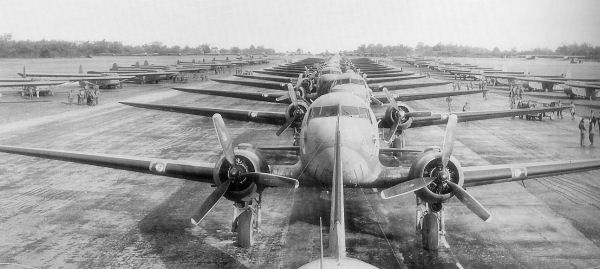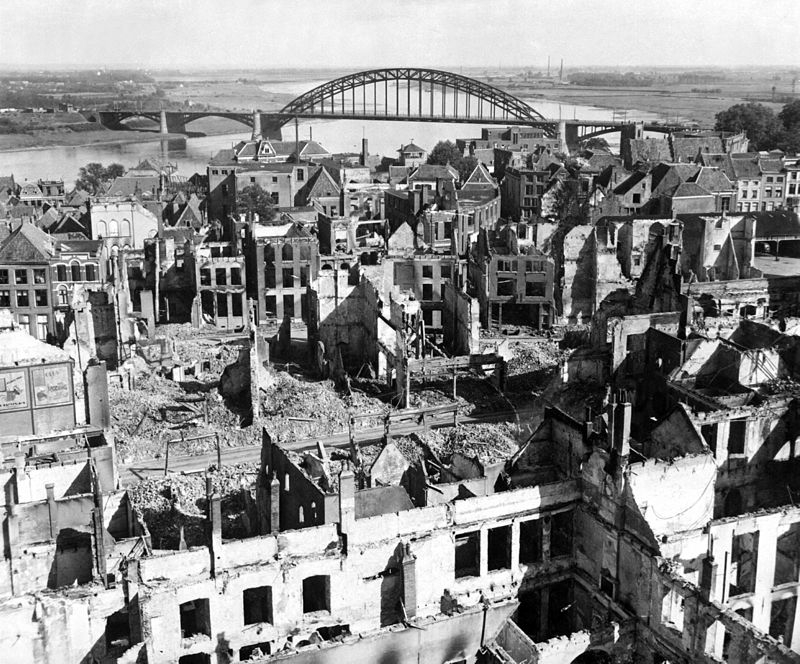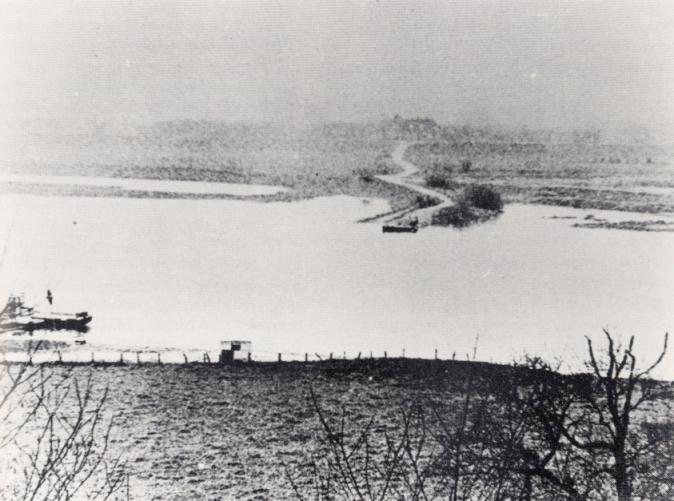
This may seem a strange title for a WWII related subject but in fact it is probably more appropriate then you’d expect.
One of the definitions of Supply Chain Management is “the management of the flow of goods and services,involves the movement and storage of raw materials, of work-in-process inventory, and of finished goods from point of origin to point of consumption”
Replace the word “consumption” with “action” or “combat” and you can apply the principle of Supply Chain management to Operation Market Garden or a great number of other operations during WWII.

The reason why I chose Market Garden is twofold. Firstly because it had a great effect on the country I was born in.Secondly It was the largest airborne operation up to that point and is one of the best recorded mistakes by the allied forces.

Planning is key to successful supply chain demand and the forecast demand needs to be as accurate as possible. Given the situation and the time this was always going to be a problem.

Among the controversial aspects of the plan was the necessity that all the main bridges be taken. The terrain was also ill-suited for the mission of XXX Corps.Brereton had ordered that the bridges along XXX Corps’ route should be captured with “thunderclap surprise“.It is therefore surprising in retrospect that the plans placed so little emphasis on capturing the important bridges immediately with forces dropped directly on them. In the case of Veghel and Grave where this was done, the bridges were captured with only a few shots being fired.
The decision to drop the 82nd Airborne Division on the Groesbeek Heights, several kilometres from the Nijmegen Bridge, has been questioned because it resulted in a long delay in its capture.

In Supply Chain management terms this is deemed to be a “bottleneck”The Bottleneck is the drum (schedule) that controls the throughput of the entire system.In this case the Nijmegen Bridge had become the bottleneck and the speed of the operation was going to be determined by the situation around the Nijmegen Bridge.
Browning and Gavin considered holding a defensive blocking position on the ridge a prerequisite for holding the highway corridor. Gavin generally favoured accepting the higher initial casualties involved in dropping as close to objectives as possible in the belief that distant drop zones would result in lower chances of success. With the 82nd responsible for holding the centre of the salient, he and Browning decided the ridge must take priority. Combined with the 1st Airborne Division’s delays within Arnhem, which left the Arnhem bridge open to traffic until 20:00, the Germans were given vital hours to reinforce their hold on the bridge.

As part of the planning you have to look at all options and pick the best option available to you,based on statistics and parameters available to ensure the best possible throughput.
Arnhem bridge was not the only Rhine crossing. Had the Market Garden planners realized that a ferry was available at Driel, the British might have secured that instead of the Arnhem bridge. Being a shorter distance away from their western drop and landing zones, the 1st Parachute Brigade could have concentrated to hold the Oosterbeek heights, instead of one battalion farther away at the road bridge; in this case, Arnhem was “one bridge too far”.

| Killed in action or died of wounds |
Captured or missing |
Safely withdrawn |
Total | |
|---|---|---|---|---|
| 1st Airborne | 1,174 | 5,903 | 1,892 | 8,969 |
| Glider Pilot Regiment | 219 | 511 | 532 | 1,262 |
| Polish Brigade | 92 | 111 | 1,486 | 1,689 |
| Total | 1,485 | 6,525 | 3,910 |
| Killed in action or died of wounds |
Captured or missing | |
|---|---|---|
| RAF | 368 | 79 |
| Royal Army Service Corps | 79 | 44 |
| IX Troop Carrier Command | 27 | 6 |
| XXX Corps | 25 | 200 |
| Total | 499 | 329 |
It is amazing to think that a simple excersize in Supply Chain management could have turned Operation Market Garden into a success, of course the term Supply Chain management was only invented in the 1980’s but not withstanding that, proper planning and forecasting could have avoided the many losses and the famine that ensued afterwards.
I did not think I could link my field of studies ‘Supply Chain Management and Production Control’ with my interest for WWII.

Donation
I am passionate about my site and I know you all like reading my blogs. I have been doing this at no cost and will continue to do so. All I ask is for a voluntary donation of $2, however if you are not in a position to do so I can fully understand, maybe next time then. Thank you. To donate click on the credit/debit card icon of the card you will use. If you want to donate more then $2 just add a higher number in the box left from the PayPal link. Many thanks.
$2.00


The objective of operation Market Garden was forming a bridgehead between Arnhem and the IJsselmeer with strong bridgeheads accross the IJssel. Not Arnhem was a bridge too far, but the bridgehead on the Veluwe for the 2nd British Army, a bridgehead along the Lower-Rhine with at least one bridge for the 1st British Airborne Division and operation Market Garden for Montgomery. Abig mistake was to scrape the landing of a British airlanding brigade in Elst between Arnhem and Nijmegen because of a shortage of airplanes.
LikeLike
Reblogged this on History of Sorts.
LikeLike